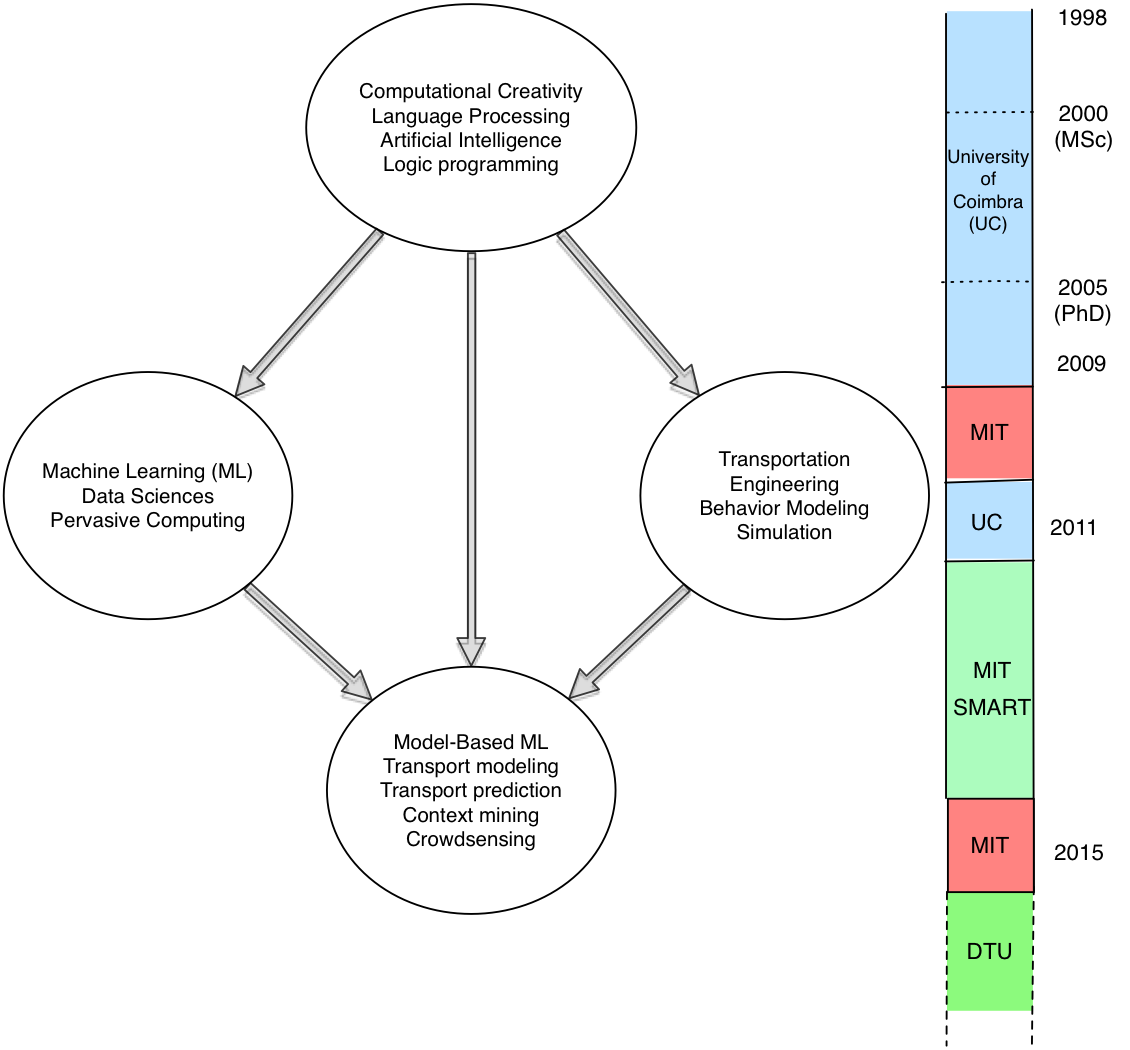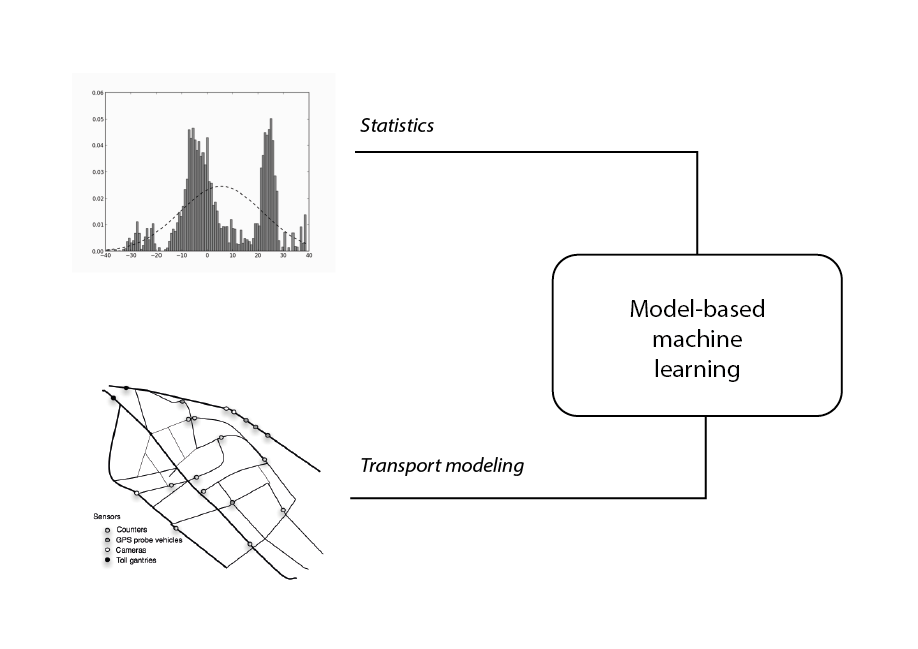ABOUT ME
My inter-disciplinary story
I did my PhD in Creativity and AI, where I learned a lot about (natural and formal) language processing, cognitive linguistics, logic programming and machine learning approaches for concept map discovery and creation. I believe to have contributed with a few interesting ideas to the ever growing field of Computational Creativity!
After the PhD (2005), I decided to return to an “old passion” of transportation and pervasive computing, and co-founded the AmiLab (with Prof. Carlos Bento, University of Coimbra). During a period, I essentially studied a lot (I call it my second PhD ;-) )! I got so involved that, since 2009, my main focus has totally been on intelligent transportation systems (ITS) and data sciences.
Ultimately, the transportation system is about human behavior. It is from the interaction of our choices, as travelers and traffic managers, with the supply (infrastructure, public transport, etc.) that traffic patterns emerge, with good and bad consequences. Only by understanding – and predicting – such interactions we can deliver efficient transport systems.
On the other hand, data (Big Data!) is flowing around us in all sorts of ways, and a lot of it is about human behavior and the transportation system:
- Social web
- Online sources about events, incidents, weather, …
- Environmental sensor
- Telecom data
- …
Context data for transportation
So, I apply different strategies to extract and analyse such data to make it ready for transportation applications. The next challenge is about actually what to do with such data in transportation. My approach is a mix of machine learning and transportation modeling (i.e. a model-based approach, a methodology well explained by Chris Bishop), as I believe best prediction models involve both good data analysis as well as domain knowledge.
Model-based machine learning
Finally, these models are useless unless we use them for something in the real world! ;-)
We need to actually generate reliable predictions, and this is the goal of a few of our projects in the ITSLab, namely DynaMIT and SimMobility. These projects involve a great deal of challenges on data quality, model stochasticity, and heteroskedascity on inputs and outputs.
In order to to understand (and even predict) the quality of our predictions, we need to analyse our models
My latest contribution on this end is on generating prediction intervals by analysing the output error of a predictive system, where we use conditional quantile regression methods to capture the lower and upper bound of the prediction (under a certain range, e.g. 90% confidence).
Both in DTU Transport and at the ITSLab, I work in all these aspects and am also involved in other projects. Check our research sections in DTU and MIT section to see more!
Some last notes on me…
Between 2005 and 2014, I was also an assistant professor in the University of Coimbra. In the meantime, I worked for a year at the Senseable City Lab of MIT, as a postdoctoral research fellow, during 2009/10. I started collaborating with the ITSLab in 2008. From 2011 to 2015, I became a researcher at the Singapore-MIT Alliance for Research and Technology (SMART), under the ITSLab from Prof. Ben-Akiva.
Please download my detailed CV here.



